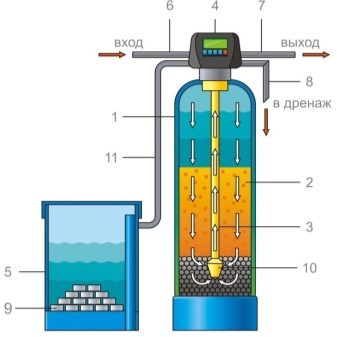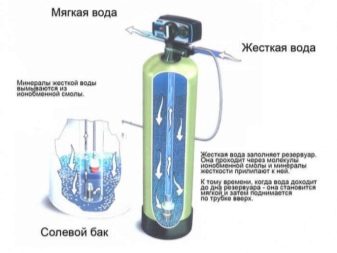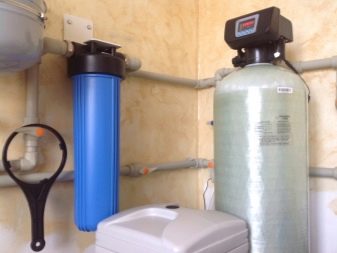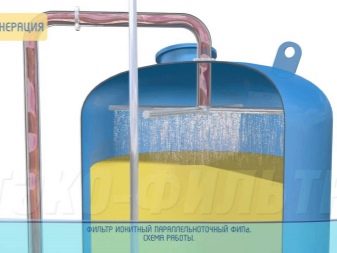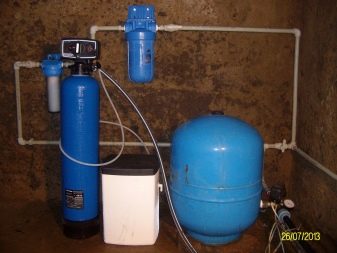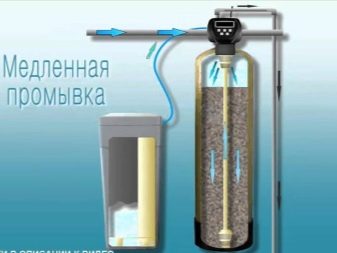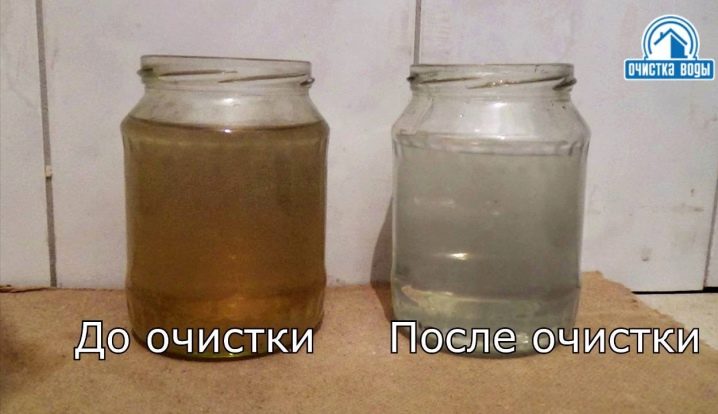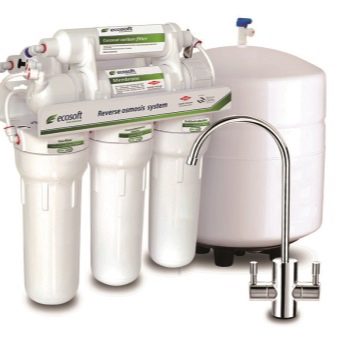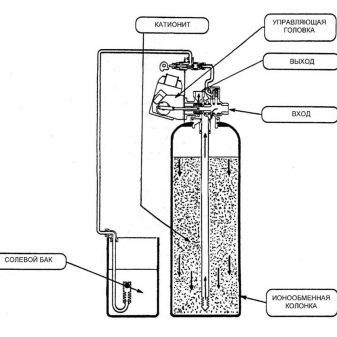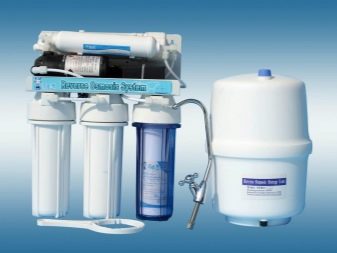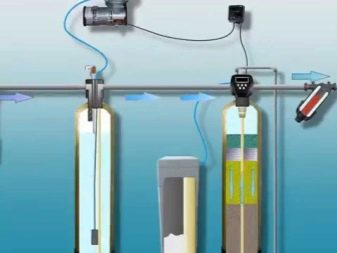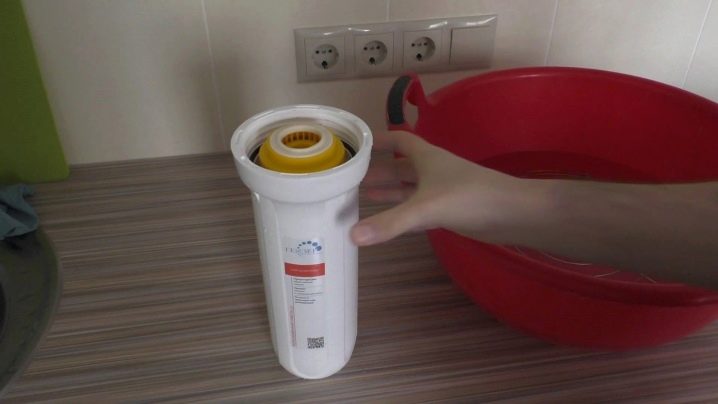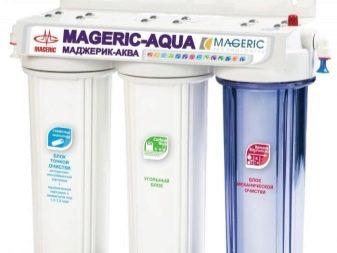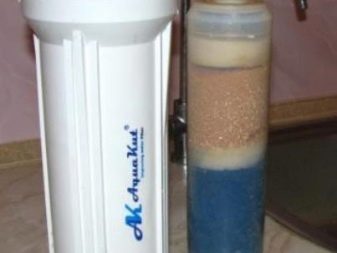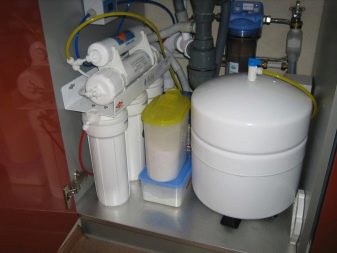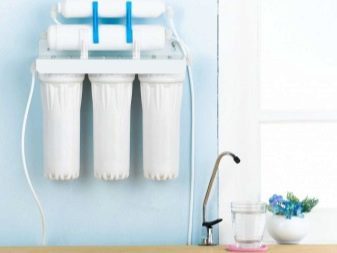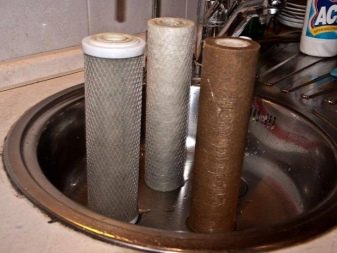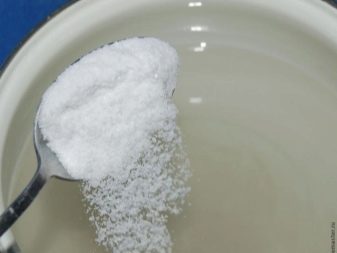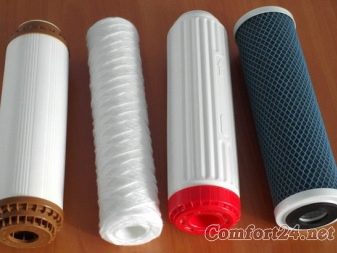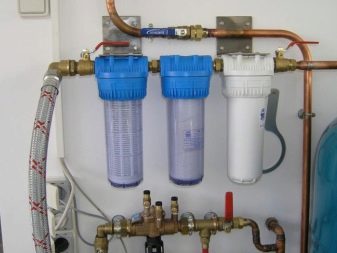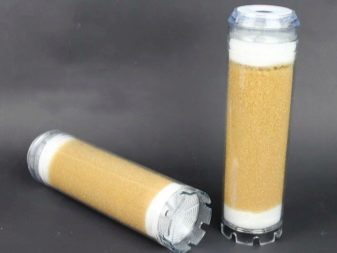Features and principle of operation of ion exchange filters
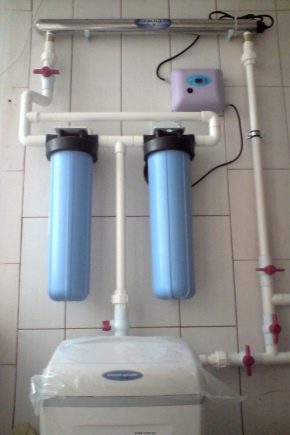
Poor water quality is one of the causes of many diseases. Water from the central water supply system does not always meet sanitary standards and needs additional cleaning. Often in urban water there is an excess amount of salts of magnesium and calcium, detrimental to the internal organs and leading to the formation of stones in the human body. In addition, hard water adversely affects the operation of heating elements of boilers, washing machines and dishwashers, contributes to the appearance of scale and the formation of limescale. To reduce the hardness of water, as well as for its high-quality cleaning is recommended to use ion exchange filters.
Operating principle
One of the most effective ways to soften water is the ion exchange method. The method is applicable in the case when the rate of mineralization reaches 100 mg of salts per liter of liquid. The most effective are filters with the use of hydrogen resins. Heavy metals and radioactive substances passing through such a filter are captured and replaced with safe hydrogen. Due to ion exchange, water is freed from excess calcium and magnesium salts and becomes slightly acidic. While in sodium filters there is an exchange of metal ions for sodium ions, which leads to an excess of salts and the occurrence of alkaline reactions. As a result of this cleaning, a change in the acid-base balance of water occurs, which, in turn, leads to disruption of metabolic processes in the body. However, the salts themselves do not represent harm to humans and do not form scale on the electric heating elements of kettles, boilers and washing machines.
Ion exchange resins are inorganic substances that contain many pores and are available in granular form. The resin needs to be cleaned periodically, the regularity of which depends on the pollution index of the flowing water and on the intensity of operation of the device.To clean the resin cartridge is used table salt and citric acid. The service life of the resin, subject to regular restoration, is at least three years. The ion exchange filter is the best way to soften water and is used to clean it from strontium ions, chromium and heavy metals, to obtain deionized water and to clean sewage. Before the use inside the softened and purified liquid it is recommended to pass in addition through the coal filter.
Device
The ion-exchange filter consists of a body made of high-strength plastic or steel, an ion-exchange resin cartridge, pipelines, upper and lower distribution devices responsible for the uniform distribution of water, and a container for the regenerating solution. In the central part of the body there is a filtration unit made of ion exchange fibrous material. Behind it is a strainer responsible for the retention of mechanical debris, and an ion exchanger. It is in it that the heavy metal ion is exchanged for sodium or hydrogen. Finishes the design of the fine filter.For removal of gases dissolved in water to the outside, special outlet ports are provided in the instrument case.
Filters differ in performance, depending directly on the volume of the filter load and the direction of movement of the regenerating flow. According to the last sign, the models are counter-current and direct-flow. The size of ion exchange models also depend on the purpose and conditions of operation. For purification of wastewater and highly contaminated liquid, filters of large sizes and high productivity are used, while a compact household model is suitable for household needs.
Small devices have a replaceable cartridge, which is easily restored, and at the end of its service life is replaced with a new one. Large models are ion-exchange columns equipped with an automatic upgrade system for ion-exchange filler, and consist of 3 blocks. The flow of fluid in them is regulated by a special valve located under the electronic processor. Salt is poured into one of the containers, which is called reducing,.As the ion-exchange resin is depleted, water is pumped into this tank and the filler is washed.
Advantages and disadvantages
High customer demand and popularity of ion exchange filters due to a number of indisputable advantages of these devices:
- Silent work. The included filter runs almost silently, which makes it most comfortable for home use.
- High degree of purification of water and wastewater. The filter successfully handles not only heavy metals and radioactive substances, but also easily retains bacteria and viruses, phenols and pesticides, oil residues and toxic impurities, and also removes dissolved residual chlorine and other gases.
- The undoubted superiority of ion replacement technology over other cleaning methods.
- Simplicity in service and availability in free sale of replaceable cartridges allow to make their replacement independently, without resorting to services of experts.
- Preservation of the mineral composition of the liquid after its passage through the filter and the charging of water with negative ions contributes to the conversion of organic salts and ensures their good digestibility by the body.
The disadvantages of the models include the need to regularly update the filler and strict adherence to the rules of disposal of waste resins. There is also a low filtration rate of some models, due to the low hydrophilicity of the resins and their slow exchange of ions. However, the most modern specimens are equipped with catalysts of exchange, allowing to spend reagents in minimal quantities. This greatly speeds up the process and increases the throughput of the device. The disadvantages include the high cost of filters, as a result of which many buyers cannot afford to purchase them.
Criterias of choice
Before you start acquiring an ion exchange filter, you must determine the performance and power of the future model. In order not to be mistaken with the choice, you should pay attention to future operating conditions and the expected intensity of use of the device. Initially, it is necessary to assess the degree of hardness of water and determine the productivity of the softening process. With insignificant exceedances of the standards for the content of salts and impurities in the liquid, there is no point in choosing an expensive, multi-capacity model.In this case, a small-size household appliance designed for treating low- and medium-polluted liquids is quite suitable. To clean industrial wastewater or to soften large volumes of hard water, you should purchase serious industrial devices equipped with an automatic regeneration system.
Almost all models of ion-exchange devices include the installation of carbon filterstherefore, to ensure the highest quality purification of water and bring it to the state of drinking, it is recommended to purchase an additional carbon cartridge. When choosing a device, one should also keep in mind the varieties of ion-exchange processes, namely, the possibility of replacing magnesium, calcium and heavy metal ions with both hydrogen and sodium. The acid-base balance of the filtered liquid depends on which particular instrument will be used for cleaning.
Exploitation
To ensure efficient operation and increase the service life of the filter, the ion exchange cartridge needs regular restoration. Recovering the cartridge filter is very simple. The regeneration process does not require certain skills and can be performed independently.To do this, you will need to prepare a solution of iodized table salt and water, taken in a proportion of 500 grams per 5 liters. Next, with the help of a special key included in the instrument, you need to unwind the case, remove the cartridge and install it in a vertical position in the sink. After all the accumulated water will drain, you need to carefully unscrew the top cover, trying not to scatter the granules.
Then it is necessary to spill two liters of solution through the cartridge, without overflowing the liquid and preventing the resin from leaching out. With the passage of salt water through the cartridge, there is a process of active drilling, which speaks only of the released air. This should not be a concern. Next, remove the cartridge from the sink, put it back into the case, pour 0.5 liters of saline solution and leave for 8-10 hours to recover. After the specified time, the cartridge is again removed from the case, placed in the sink and spilled with the remaining solution.
At the end of the pouring, it is necessary to drain the remaining solution and carefully close the top cover. Next, the cartridge is installed in the filter and screwed.At the final stage of regeneration, it is required to open water and shed the device for 3 minutes. The flow rate should not be less than 1.5 liters per minute. After the salty taste disappears from the filtered water, you can drink it, and the recovery process can be considered complete.
Ion exchange filters effectively solve the problem of the presence of impurities of salts and heavy metals in the liquid, soften tap water, saturate it with negative ions and maintain the general acid-base balance. And the wide range, availability of replaceable cartridges and the possibility of their self-replacement make the device even more popular and popular.
For information on how to regenerate the ion exchange filter, see the next video.
